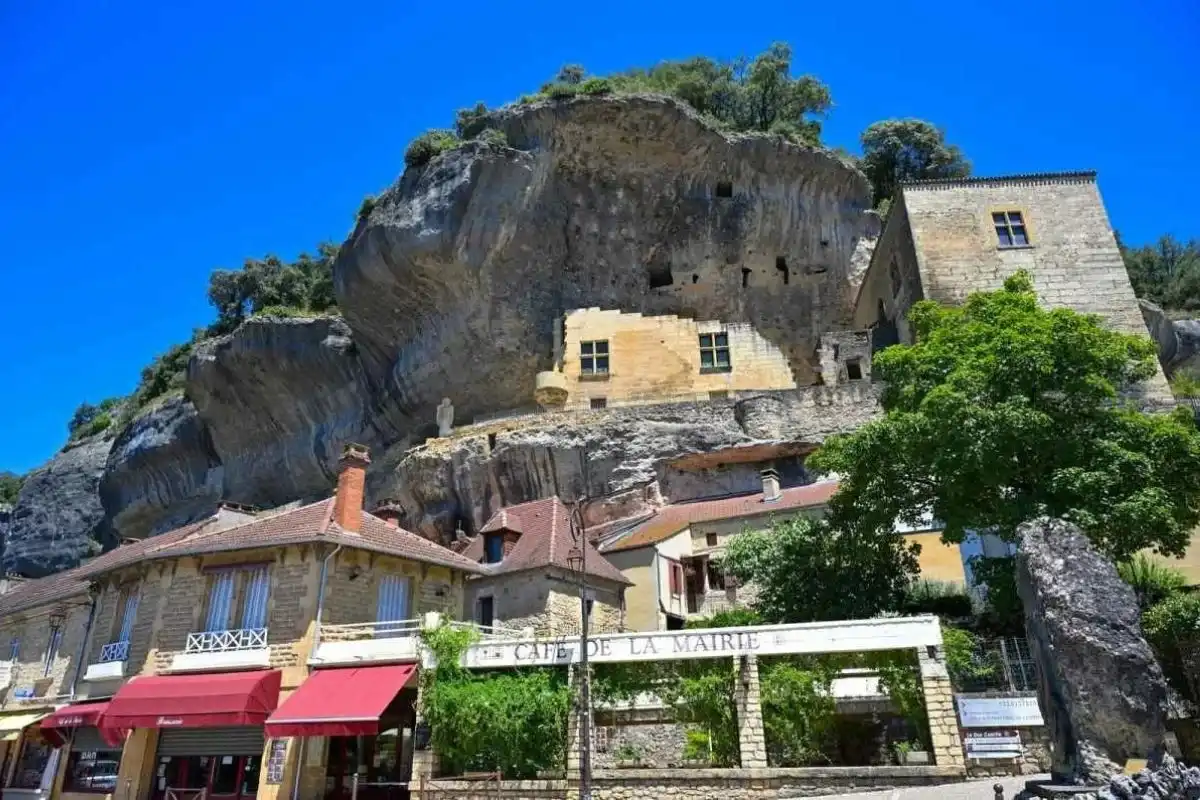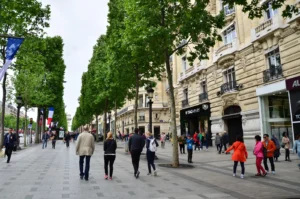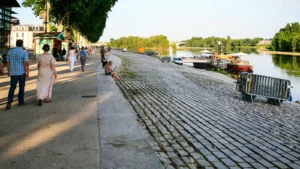Looking for a region in France that blends rich history, stunning nature, and irresistible food—all without the tourist overload? This Dordogne travel guide has you covered. Tucked away in southwest France, Dordogne is home to prehistoric caves, dramatic castles, riverfront villages, and some of the most charming countryside in Europe.
In this guide, you’ll find everything you need to plan the perfect trip—whether you’re into culture, cuisine, outdoor adventures, or just soaking in the scenery. From must-visit towns to hidden gems, local tips, and itinerary ideas, this is your complete Dordogne travel guide to exploring one of France’s best-kept secrets.
Must-Visit Towns and Villages in Dordogne
Dordogne is sprinkled with some of the most charming and photogenic towns in France. These places aren’t just pretty—they’re steeped in history, culture, and local flavor. Here are the standout spots you shouldn’t miss during your trip.
Sarlat-la-Canéda
Sarlat is often the first stop for travelers exploring Dordogne, and for good reason. This beautifully preserved medieval town is like stepping back in time. Its honey-colored stone buildings, winding alleyways, and bustling squares make it a must-see.
The heart of the town is Place de la Liberté, where you’ll find open-air markets (especially lively on Wednesdays and Saturdays) filled with local produce, foie gras, cheeses, and crafts. In the evening, the town glows with warm lighting, and street performers bring it to life.
Don’t miss: The view from the panoramic elevator in the bell tower of the former Church of Sainte-Marie.
Domme
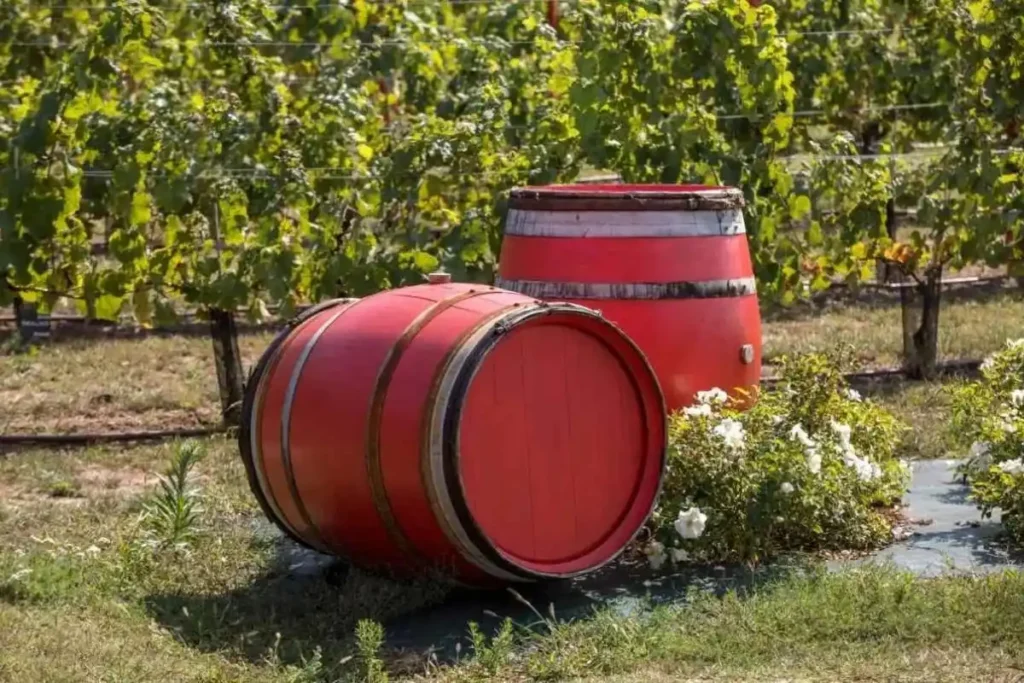
Just a short drive from Sarlat, Domme is a bastide town perched high above the Dordogne River. Its strategic location offers sweeping views of the valley—arguably some of the best in the region. Although small, the village is full of character, featuring arched stone gates, tidy lanes, and a laid-back atmosphere.
Right beneath the main square lie the Domme caves, featuring colorful rock formations and even graffiti left by Knights Templar prisoners in the 13th century.
Beynac-et-Cazenac
This riverside village is as dramatic as they come, with its medieval castle towering over steep cobblestone streets. The Château de Beynac is one of the best-preserved fortresses in France, offering panoramic views of the Dordogne River and its surrounding towns.
The village itself is quiet and atmospheric, especially in the early morning or late afternoon when the golden light hits the stone buildings just right. A hike up to the castle is worth the effort, and kayaking down the river provides an unforgettable perspective.
La Roque-Gageac
Tucked between a cliff and the river, La Roque-Gageac looks like a painting. It’s one of Les Plus Beaux Villages de France (an official title for France’s most beautiful villages), and once you’re there, you’ll see why.
You can explore the village on foot, enjoy a peaceful gabare boat ride, or simply relax with a drink at a riverside café. A short botanical walk through the village showcases palm trees and Mediterranean plants, a surprising touch in this part of France.
Les Eyzies-de-Tayac-Sireuil
If you’re fascinated by human history, Les Eyzies is your spot. Known as the Capital of Prehistory, it’s surrounded by some of the most important archaeological sites in Europe.
It’s home to the National Museum of Prehistory, and just outside town, you’ll find the famous Font-de-Gaume and Rouffignac caves. The town itself has a rugged charm, set beneath dramatic cliffs, and it serves as a solid base for exploring the Vézère Valley.
Brantôme
Often nicknamed the “Venice of Périgord,” Brantôme is a romantic little town nestled on a river bend in the northern part of Dordogne. Its Benedictine abbey is the star of the show, with an origin story dating back to Charlemagne. Tranquil gardens surround the abbey, and caves carved into the cliff just behind it add to its charm.
Canoeing around Brantôme is a favorite way to see the town from a new angle, gliding under stone bridges and past quiet riverside cafés.
Périgueux
As the capital of the Dordogne department, Périgueux offers a mix of history and modern French living. It’s bigger than the other towns on this list, but it still retains plenty of old-world charm. The standout landmark is the Saint-Front Cathedral, a UNESCO World Heritage site featuring Byzantine-style domes that give it a distinctive appearance.
You can also visit the Vesunna Gallo-Roman Museum, built over ancient Roman ruins. And when it comes to food and drink, Périgueux boasts a vibrant culinary scene featuring trendy bistros, wine bars, and stylish cafés.
Dordogne Food & Wine Guide
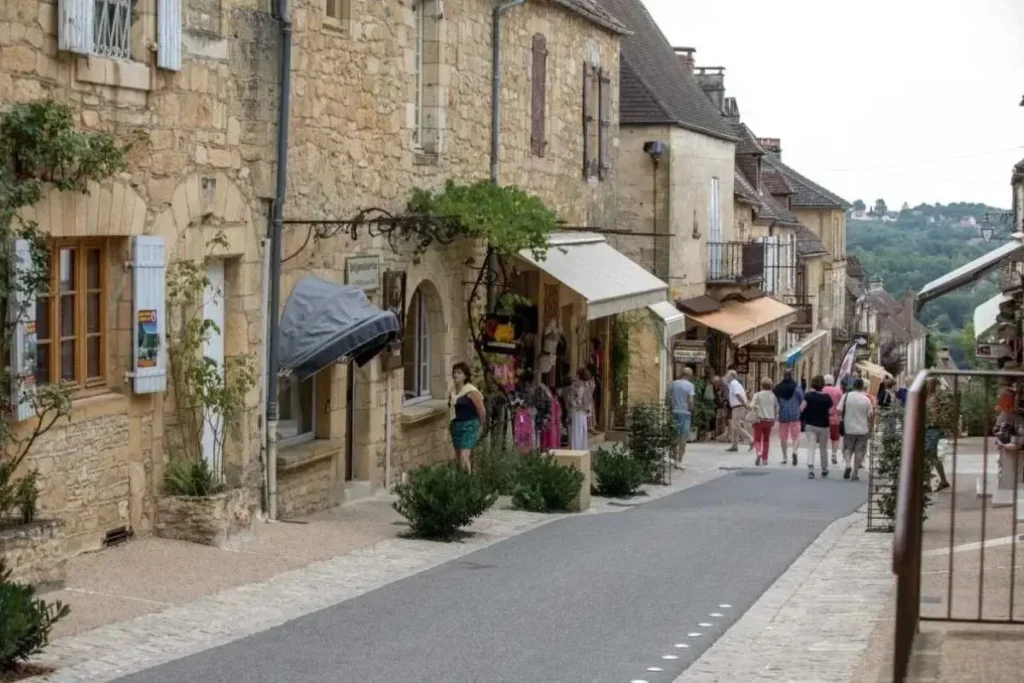
If you’re heading to Dordogne, come hungry. This region is a paradise for food lovers, known for its rich, hearty cuisine and top-quality local ingredients. Whether you’re dining in a rustic village bistro or shopping at a farmer’s market, you’ll quickly see how deeply food is woven into daily life here.
Signature Dishes You Have to Try
Dordogne is famous for its duck and goose dishes, which are central to the region’s identity.
- Duck Confit (Confit de Canard): Slow-cooked duck leg that’s crispy on the outside, tender on the inside, and usually served with potatoes cooked in duck fat.
- Foie Gras: A local delicacy made from the liver of a specially fattened duck or goose. Served as a pâté, mousse, or lightly seared, it’s a big part of Dordogne’s culinary pride.
- Magret de Canard: Duck breast, often grilled or pan-seared, served with a red wine or berry sauce.
- Truffles: Particularly the black truffle, or “black diamond,” which is harvested in winter. You’ll find it shaved over pasta, eggs, or mixed into sauces.
- Walnut Cake (Gâteau aux Noix): Made with locally grown walnuts, this moist cake is a perfect way to end a meal.
In just one market visit, you’ll see stalls stacked with duck confit, foie gras, truffle oils, chestnuts, and walnut products. If you’re visiting in fall or winter, many towns even host truffle markets—especially in places like Sarlat and Périgueux.
The Local Wine Scene
While Dordogne isn’t as internationally famous as Bordeaux or Burgundy, its wines are still top-notch—and often better value. The main wine region in this area is Bergerac, located just southwest of the main Dordogne region.
- Bergerac AOC: Offers a wide range of reds, whites, and rosés. The reds tend to be bold yet smooth, made from similar grapes to those used in Bordeaux, including Merlot, Cabernet Sauvignon, and Cabernet Franc.
- Monbazillac: This is the region’s standout sweet wine, similar to Sauternes but often more affordable. It’s usually paired with foie gras or desserts.
- Pécharmant: A robust red wine that pairs well with rich meat dishes—perfect if you’re indulging in duck confit or cassoulet.
Many wineries in the Bergerac area offer tastings and tours, and you don’t need an appointment at most places. Just show up, sip, and enjoy the views.
Top Foodie Experiences in Dordogne
- Visit Sarlat Market: One of the best in France, especially on Saturday mornings.
- Truffle Hunting Tours: Offered in winter months by local farms—some even let you go out with trained dogs.
- Walnut Oil Mills: The region is dotted with traditional walnut oil mills, where you can observe the pressing process and sample the oil.
- Cooking Classes: Learn to prepare classic Périgord dishes, such as foie gras terrine or duck confit, with a local chef.
Dordogne Itinerary Ideas
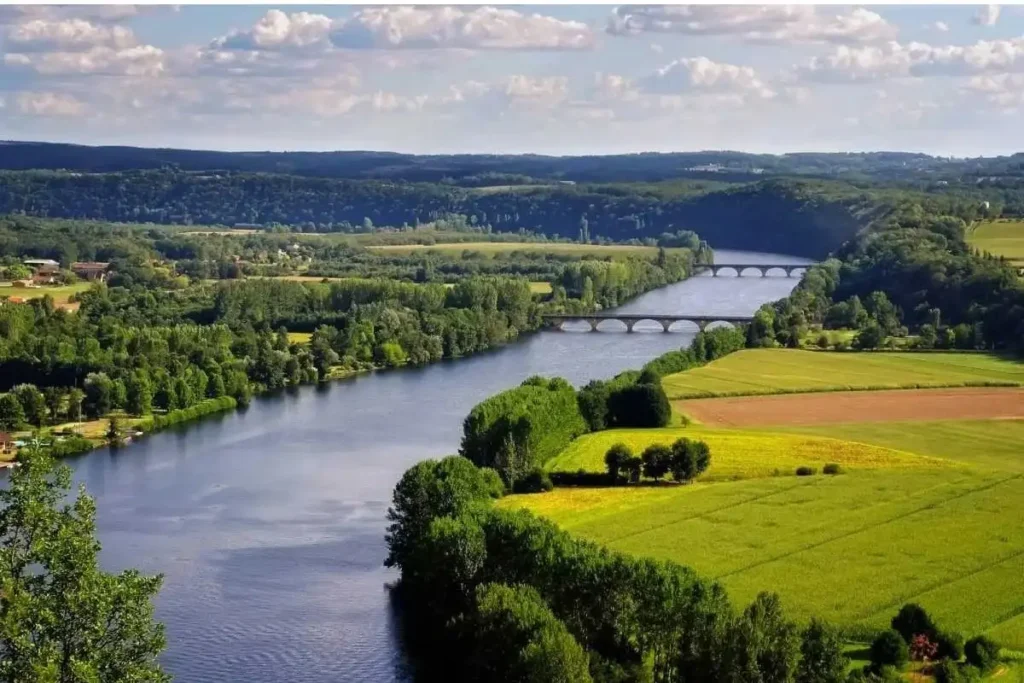
Whether you’ve got a long weekend or a full week to explore, Dordogne is incredibly rewarding to travel through by car. To help you make the most of your time, we’ve created a sample itinerary tailored to your stay duration. Each one mixes scenic towns, historical sites, and time to relax.
7-Day Dordogne Itinerary: The Full Experience
Got a week? This itinerary offers a comprehensive glimpse into the region’s diverse offerings, from its rich history to its modern charm.
Day 1: Sarlat-la-Canéda & Domme
- Start with a full day in Sarlat, wandering its medieval lanes and enjoying the lively market (especially on Wednesday or Saturday).
- In the afternoon, drive up to Domme for sunset views over the Dordogne River.
Day 2: Beynac-et-Cazenac & La Roque-Gageac
- Tour Château de Beynac in the morning.
- After lunch, head down to La Roque-Gageac and take a relaxing boat ride.
- Optional: Go kayaking between the two towns if the weather’s good.
Day 3: Prehistoric Dordogne
- Spend your last day in Les Eyzies-de-Tayac.
- Visit Lascaux IV or Font-de-Gaume cave if tickets are available.
- Wrap up with a meal in a cave-side restaurant or by the river.
Day 4: Gardens & River Views
- Visit the Jardins de Marqueyssac in the morning.
- Enjoy a picnic or canoe trip on the Dordogne River in the afternoon.
Day 5: Bergerac or Brantôme
- Head to Bergerac for wine tasting and a quieter town vibe.
- Or choose Brantôme if you prefer a lush riverside setting and a rich history of monasteries.
Day 6: Périgueux
- Drive to Périgueux, the Dordogne capital.
- Visit Saint-Front Cathedral and the Vesunna Gallo-Roman Museum.
- Enjoy dinner at a contemporary French restaurant.
Day 7: Day Trip to Gouffre de Padirac (Optional Side Trip)
- If you’re up for a bit more driving, head to the Gouffre de Padirac—an epic underground river cave experience.
- Otherwise, spend a relaxing last day revisiting your favorite village or shopping at a local market.
Where to Stay in Dordogne: Experience Château Life at Lasfonds
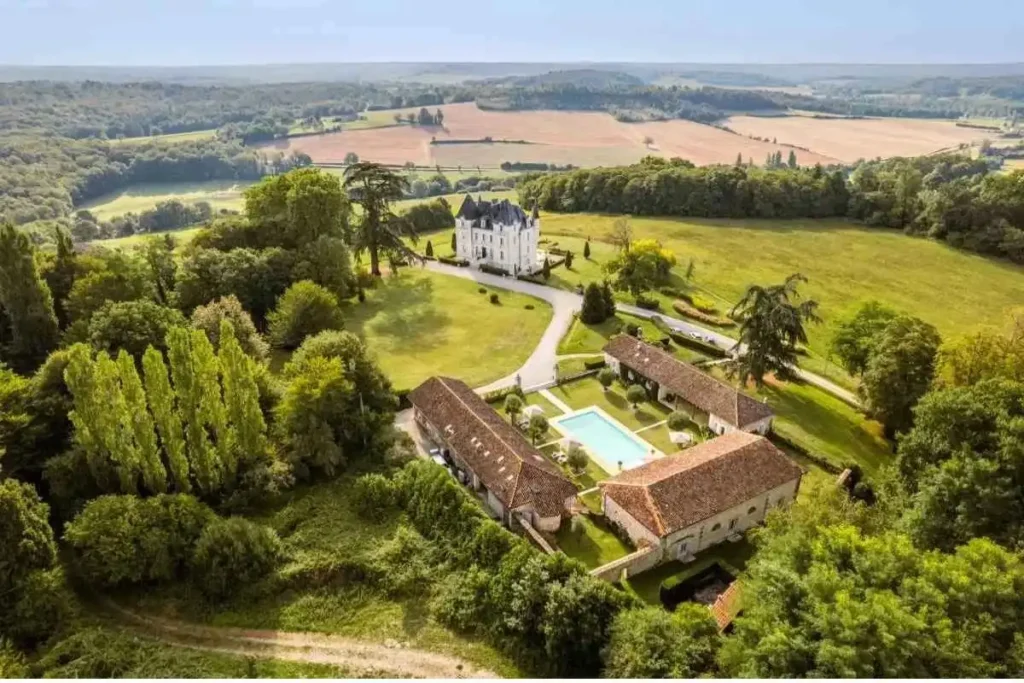
While Dordogne offers plenty of lovely places to stay—think boutique hotels in Sarlat, charming B&Bs in Domme, or countryside gîtes—none come close to the magic of waking up in your own private château. That’s precisely what Château de Lasfonds delivers.
Why Choose Château de Lasfonds?
Set on 6.5 hectares of peaceful countryside on the border of Dordogne and Charente, Château de Lasfonds blends historic grandeur with modern luxury. Built between 1849 and 1893, the château is a stunning mix of Neo-Gothic and Neo-Renaissance architecture, complete with turrets, stained glass, a grand staircase, and beautifully restored interiors. It’s an experience, not just a place to sleep.
You’ll be staying within reach of some of Dordogne’s most charming villages—Brantôme, Villebois-Lavalette, Aubeterre-sur-Dronne, and Bourdeilles are all easy day trips. At the same time, you’re far enough from touristy crowds to enjoy total privacy and peace.
What You’ll Find at Lasfonds
- Luxury accommodations: 4 elegant guest rooms inside the main château + 3 fully equipped guest houses (including Lavender Cottage, Garden Gîte, and Pool Gîte), sleeping up to 20 guests in total
- Modern amenities: Heated pool, fitness room, game room, high-speed WiFi, streaming, even a PS5 + VR headset for downtime fun
- Authentic charm: Stone walls, exposed beams, fireplaces, and antiques meet barista corners, rain showers, and plush linens
- Outdoor beauty: Vast gardens, private terraces, forest paths, and countryside views
- Optional extras: Private chefs, wine tastings, massage therapists, and housekeeping—just ask
Whether you’re planning a romantic getaway, a family reunion, or a luxury group retreat, Lasfonds is the kind of place that feels both timeless and tailor-made.
Other Options? Sure—But Why Would You?
Sarlat and Domme offer great boutique hotels, and rural B&Bs are easily accessible. But when you can sleep in a 19th-century château with a heated pool, sprawling lawns, and designer-level comfort… why not go all in?
Make your Dordogne trip unforgettable. Book your stay at Château de Lasfonds now
Travel Tips for Visiting Dordogne
Dordogne is a region that rewards slow travel, spontaneous detours, and soaking up the little moments—like a glass of Bergerac wine at sunset or chatting with a market vendor about their walnut oil. However, a few smart travel tips can help you maximize the enjoyment of your trip.
1. Renting a Car Is Essential
Public transportation between towns is limited, and some of the best spots—such as hidden villages, castles, and scenic viewpoints—are only accessible by car. Be sure to rent one at either the airport or train station. A small car is ideal for narrow village roads, and an automatic is worth requesting ahead of time (they book out fast in France).
Bonus tip: Download offline Google Maps for Dordogne before you go—cell service can be spotty in rural areas.
2. Market Days Are a Big Deal
Every town has its own market schedule, and they’re a great way to experience local life. The Sarlat market, held on Wednesdays and Saturdays, is the most famous, but don’t overlook the smaller ones in places like Issigeac or Brantôme. Markets typically run from morning until 1 PM.
Pick up picnic supplies: local cheese, saucisson, fresh baguettes, fruit, and maybe a bottle of wine or cider.
3. Pre-Book Major Attractions
While wandering is part of the charm, some key sites—such as Lascaux IV, Font-de-Gaume, and certain castles—require advance booking, especially during high season (July–August). Guided tours often fill up days in advance.
Pro tip: Look for combo tickets that include multiple attractions in one pass.
4. Be Ready for Limited Hours
Shops, restaurants, and even tourist offices often close between 12:30 and 2:30 PM for lunch—and some don’t reopen at all in the afternoon, especially in smaller towns. Plan your sightseeing and dining around these breaks.
5. Pack Smart for Country Roads and Cobblestones
Leave the heels at home—comfortable shoes are essential for navigating medieval towns with uneven stone paths. In spring and fall, layers are key since the weather can shift quickly. If you’re visiting in summer, bring sun protection and plenty of water for day trips.
6. Learn a Few French Phrases
While many locals speak some English (especially in tourist-heavy areas), a little French goes a long way. Even a simple “Bonjour, merci, s’il vous plaît” will earn smiles and friendlier service.
FAQs About Visiting Dordogne, France
Yes—Dordogne is a peaceful and low-pressure destination for solo travelers. The locals are friendly, the towns are walkable, and there’s a strong sense of safety across the region. If you enjoy slow travel, photography, history, or food, you’ll find solo exploring here incredibly rewarding and restorative.
Absolutely. While the Dordogne is known for its luxury stays and fine dining, there are also plenty of wallet-friendly options. Think farm stays (chambres d’hôtes), casual bistros with €12 lunch menus, free riverside hikes, and village festivals. If you self-cater and stick to local markets, you can explore richly without overspending.
Dordogne is fantastic for families. Many towns offer playgrounds, interactive museums, river activities such as canoeing, and even castles with kids’ workshops. Restaurants are generally welcoming to children, and rental homes often come with big yards and pools. It’s a safe and spacious region with plenty of fresh air and adventure.
In most towns, you’ll get decent 4G or WiFi, especially at hotels and vacation rentals. But in rural or forested areas, the signal can dip—especially if you’re staying off the grid. Download offline maps, and don’t expect perfect service everywhere. It’s a good place to unplug a bit.
You can—but with some caveats. The region is hilly, and distances between villages can be long. For experienced cyclists, it’s beautiful and challenging. For casual riders, stick to designated bike routes near rivers or consider renting e-bikes to assist with climbs. Always check the terrain before planning your route.
Yes, and some would argue it’s even better. Spring brings wildflowers and quiet streets. Fall has golden vineyards and truffle season. Winter is crisp and cozy—perfect for fireplace dinners and fewer crowds. Please check seasonal hours, as some attractions close or shorten their schedules during the winter months.
Not at all—but learning a few polite phrases goes a long way. In more rural areas, English may be limited, but locals are generally patient and helpful. Carrying a translation app or phrasebook can smooth over gaps, and you’ll earn genuine smiles for trying.
While the Dordogne is known for its meat-heavy cuisine (hello, duck confit), vegetarians can still enjoy a well-balanced meal. Markets are packed with local produce, cheeses, breads, and walnut-based dishes. Many restaurants now offer at least one veggie option, especially in tourist-friendly towns. Just let your host or waiter know—“Je suis végétarien(ne)” works wonders.
Dordogne isn’t a big spa destination, but you can find some hidden gems. A few luxury hotels and countryside retreats offer massage, sauna, or wellness treatments. For full thermal spa experiences, you may need to venture slightly beyond Dordogne—to places like Dax or La Roche-Posay.
Dordogne’s charm can be tricky for accessibility—think cobbled streets, narrow alleys, and hilly terrain. However, some towns (like Sarlat) are making improvements with ramps and adapted paths. Many major attractions now offer accessible accommodations, but it’s best to check with each site or hotel directly.
Tap water is safe and perfectly drinkable across Dordogne. Bring a reusable bottle and fill up at fountains or cafes. In rural areas, you’ll also find sparkling clean springs and natural water sources—just make sure they’re marked potable (“eau potable”) before drinking.
Yes—France is famously dog-friendly, and Dordogne is no exception. Many vacation rentals allow pets, and you’ll often see dogs in outdoor cafés, markets, and even some shops. Just remember a leash, poop bags, and check if swimming spots or castles allow furry companions.
Most places take Visa and Mastercard, especially in tourist towns. That said, it’s smart to carry some cash (euros) for smaller markets, village cafés, and roadside stands. ATMs are easily accessible in larger towns, but less common in rural areas—plan ahead for weekend outings.
Skip the kitschy souvenirs and look for local specialties, such as walnut oil, handmade knives, leather goods, truffle salt, duck rillettes, and artisanal ceramics. Many items are made in small batches by family-run workshops. Markets and village boutiques are the best places to discover high-quality, locally made finds.
Tipping in France isn’t mandatory—restaurants include service in the bill. That said, rounding up or leaving a few euros for outstanding service is appreciated. For hotel staff, taxis, or tour guides, a 5–10% tip is generous. Locals tip less frequently, but polite gestures go a long way.
